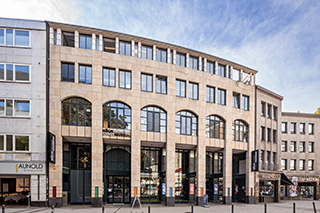Kölnisches Stadtmuseum
The Kölnisches Stadtmuseum (Cologne City Museum) has a rich history dating back to the founding of the historical museum of the city of Cologne in 1888 and encompasses several predecessor institutions and their diverse inventory books.
When it was founded, the historical museum of the city of Cologne was initially housed in the Hahnentorburg, a medieval city gate. In 1902, a second medieval city gate, the Eigelsteintorburg, was added as an additional exhibition venue. This institution was intended to preserve and exhibit Cologne's historical heritage. Transfers from the city archives and the Wallraf-Richartz Museum initially formed the basis of the collections.
In the 1920s, under the aegis of Lord Mayor Konrad Adenauer, the idea of a comprehensive Rhenish Museum was born. It was intended to present the history of the entire Rhineland and found its home in the former cuirassier barracks in Deutz. This concept eventually culminated in the Haus der Rheinischen Heimat (House of Rhenish Heritage), which opened in 1936 during the Nazi era.
The museum pursued a regional cultural concept, but was ideologically exploited during the Nazi era and severely damaged in the Second World War. After the war, a new beginning was made: in 1958, the Kölnisches Stadtmuseum was founded and moved into the early modern armoury of the city of Cologne. The collections of the historical museum and the Rhenish Museum were brought together under the umbrella of the Kölnisches Stadtmuseum.
After water damage in 2017, large parts of the armoury had to be evacuated, which is why the permanent exhibition is currently being presented with a completely new concept in a former fashion house.
The museum's collection as a whole depicts the history of Cologne in its social, economic, societal and cultural aspects. The museum's collections have been continuously expanded and now comprise around 480,000 objects, including medieval documents such as the Verbundbrief (a document establishing a union of towns), the medieval city constitution, and the city seal from 1268, an elaborately designed model of the city from 1571, paintings and prints from the Middle Ages to the present day, furniture and numerous everyday objects and contemporary artefacts relating to current events such as the coronavirus pandemic.
Fortunately, all the inventory books of the historical museum, the Rhenish Museum, the Haus der Rheinischen Heimat and the Kölnisches Stadtmuseum have been preserved. All inventory books older than 75 years are published here.

